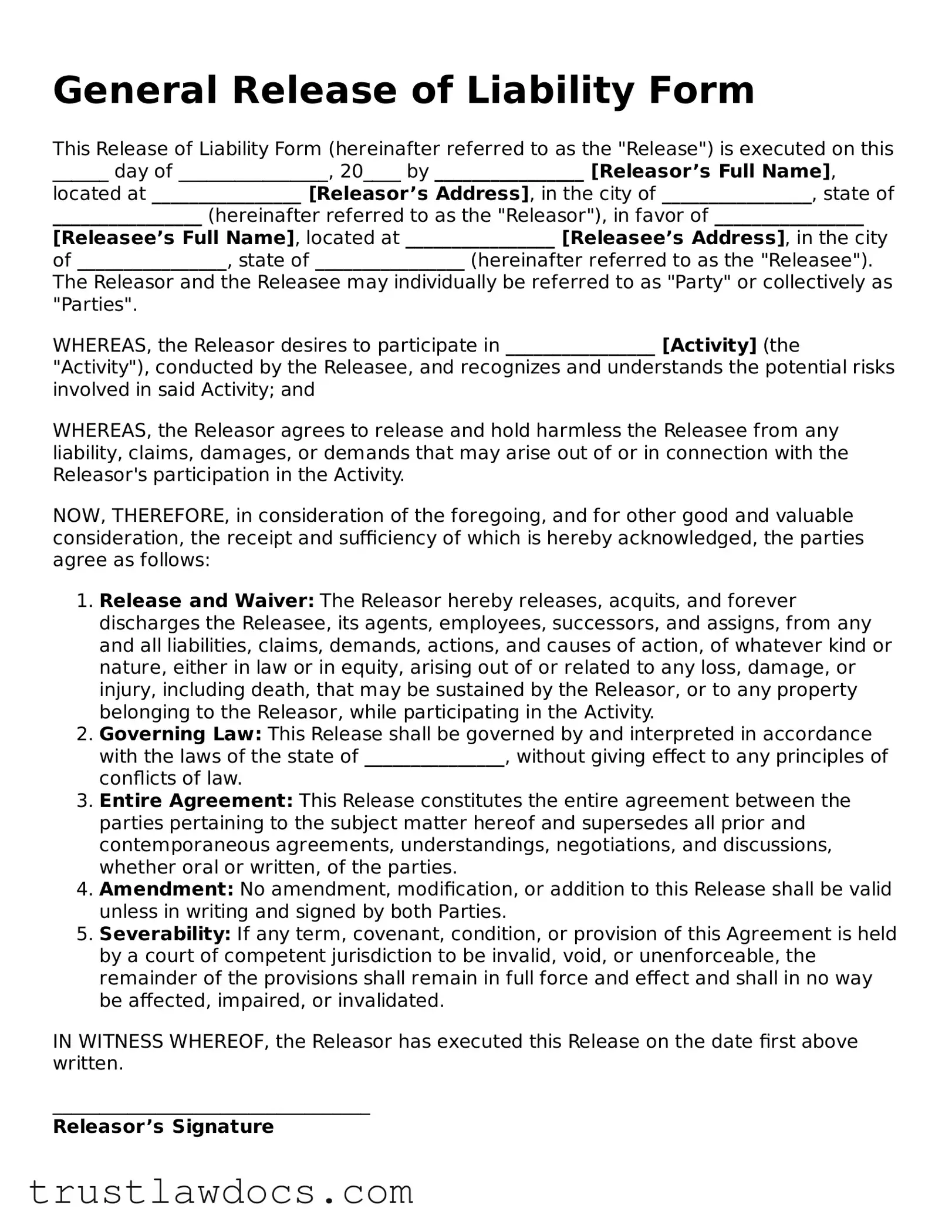General Release of Liability Form
This Release of Liability Form (hereinafter referred to as the "Release") is executed on this ______ day of ________________, 20____ by ________________ [Releasor’s Full Name], located at ________________ [Releasor’s Address], in the city of ________________, state of ________________ (hereinafter referred to as the "Releasor"), in favor of ________________ [Releasee’s Full Name], located at ________________ [Releasee’s Address], in the city of ________________, state of ________________ (hereinafter referred to as the "Releasee"). The Releasor and the Releasee may individually be referred to as "Party" or collectively as "Parties".
WHEREAS, the Releasor desires to participate in ________________ [Activity] (the "Activity"), conducted by the Releasee, and recognizes and understands the potential risks involved in said Activity; and
WHEREAS, the Releasor agrees to release and hold harmless the Releasee from any liability, claims, damages, or demands that may arise out of or in connection with the Releasor's participation in the Activity.
NOW, THEREFORE, in consideration of the foregoing, and for other good and valuable consideration, the receipt and sufficiency of which is hereby acknowledged, the parties agree as follows:
- Release and Waiver: The Releasor hereby releases, acquits, and forever discharges the Releasee, its agents, employees, successors, and assigns, from any and all liabilities, claims, demands, actions, and causes of action, of whatever kind or nature, either in law or in equity, arising out of or related to any loss, damage, or injury, including death, that may be sustained by the Releasor, or to any property belonging to the Releasor, while participating in the Activity.
- Governing Law: This Release shall be governed by and interpreted in accordance with the laws of the state of _______________, without giving effect to any principles of conflicts of law.
- Entire Agreement: This Release constitutes the entire agreement between the parties pertaining to the subject matter hereof and supersedes all prior and contemporaneous agreements, understandings, negotiations, and discussions, whether oral or written, of the parties.
- Amendment: No amendment, modification, or addition to this Release shall be valid unless in writing and signed by both Parties.
- Severability: If any term, covenant, condition, or provision of this Agreement is held by a court of competent jurisdiction to be invalid, void, or unenforceable, the remainder of the provisions shall remain in full force and effect and shall in no way be affected, impaired, or invalidated.
IN WITNESS WHEREOF, the Releasor has executed this Release on the date first above written.
__________________________________
Releasor’s Signature
__________________________________
Releasor’s Printed Name
IN WITNESS WHEREOF, the Releasee has executed this Release on the date first above written.
__________________________________
Releasee’s Signature
__________________________________
Releasee’s Printed Name
